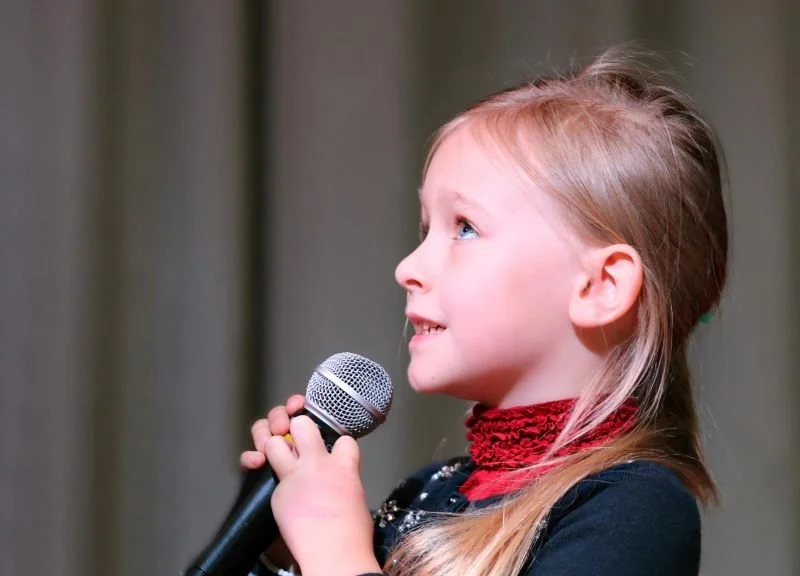Photo by Pixabay: https://www.pexels.com/photo/girl-holding-black-dynamic-microphone-while-looking-above-236149/
In the fifth grade, I won the class spelling bee, but I didn’t want to represent my grade in the school spelling bee. Why? Because the thought of speaking in front of an audience made me want to hide under the bed. Fast forward to high school, where I slowly and painfully made it through a speech on astrology (we had to choose a topic on the supernatural). Although I always aced the writing assignments, I knew that my speaking skills needed a lot of work. So, it was a surprise when, later in life I ended up becoming a corporate trainer, speaking in front of hundreds of people in a variety of companies.
However, the path wasn’t easy, and looking back, I really wish I’d learned public speaking earlier.
And I know I’m not the only one. I’ve heard many people say the same thing. Public-speaking is one of the most important skills, but many people grow up without much practice. Just like learning a new language is easier when you’re a kid, learning presentation skills early instead of waiting until adulthood can make a huge difference.
Why should kids learn speaking skills?
1) Build confidence: Helps you stand up for yourself
2) Get People to Listen: Explain an idea in a way that grabs people’s attention.
3) Win arguments: Create smart and well-crafted explanations for your views.
4) Build Empathy: Understand what your audience finds interesting so that you can better connect with them.
5) Be Creative: Come up with new, fun ways to get your point across and engage the audience.
6) Develop Research Skills: Practice digging into the facts and details of a topic to get your point across.
7) Connect with People. In the age of technology and social media, it helps you get more comfortable communicating face-to-face.
8) Future Work: Be prepared for interviews or to sell your ideas if you start your own business.
Sure, more schools are requiring kids to learn how to give presentations earlier, but it’s rare that a kid will want to work on public-speaking skills for fun. I know that I didn’t! I always preferred a good story over a dry textbook.
That’s why I came up with an entertaining story to teach kids the basic principles of being a successful speaker using the 5 P’s of Presentations.
1) Point
2) Prepare
3) Practice
4) Play
5) Present
About Super Speaker – Coming Soon!
Gia Dorsey is an outspoken, funny, and clumsy sixth-grader, otherwise known as Super She, a TV show superhero alias she gave herself to feel more confident – confidence she needs to save kids from bullies, give a speech, and do the scariest thing of all – start middle school.
It’s not me, it’s Super She, Gia thinks to herself after doing outlandish things such as speaking at a school assembly, pulling a prank in History class, and doing an impromptu cheer at a soccer game. After all, she’s willing to do anything to stop perfectly perfect Cora Dressler from stealing her best friend, Lance Garrett.
But Lance thinks that Cora can do no wrong and is even sure she’ll win the Speech Masters Contest. When Gia’s new friend, Annabelle Hale, enters this public-speaking contest, Gia is determined to help her win. She volunteers to coach Annabelle on the 5 P’s of Presentations and also starts a “little rumor” about Cora.
However, when the rumor spreads like wildfire and risks burning her friendships, Gia can’t rely on Super She’s superpowers. Instead, plain old Gia Dorsey must use her own powers.
This story captures middle school angst in a humorous way and shows that a superhero lives inside each person, but can only be discovered if she’s able to overcome fears and be her true self.





